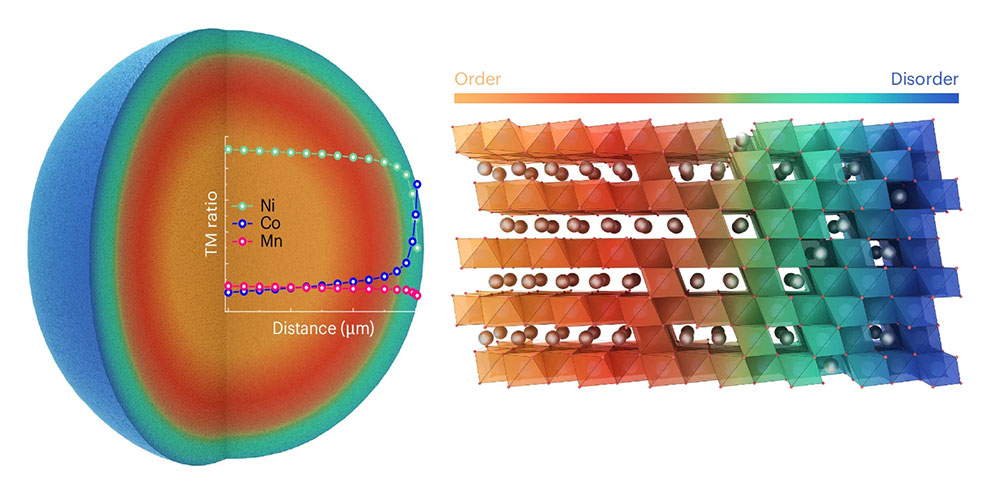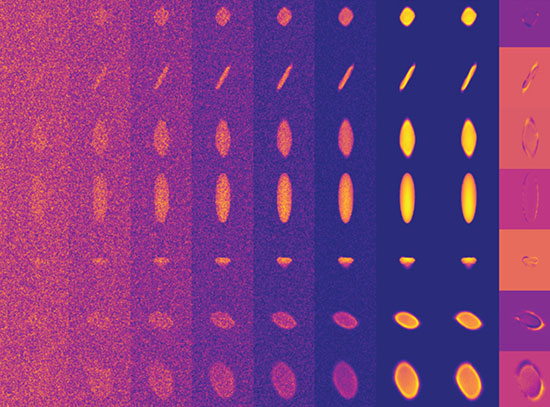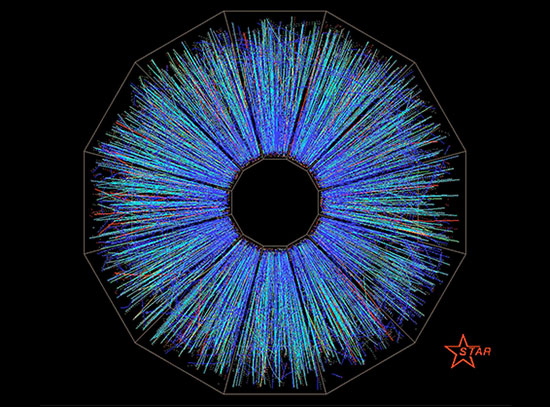Innovative Dual-Gradient Cathode Achieves High Voltage and Capacity
November 30, 2024
 enlarge
enlarge
Structure ordering/concentration dual-gradient particle with gradient structure from order to disorder towards outer layer and gradient composition from Cobalt-less bulk to Cobalt-enriched surface. Credit: Nat Energy (2024).
The Science
Researchers design an ultrastable layered oxide cathode for Lithium Ion (Li-ion) batteries that can mitigate strain and improve thermal stability under high voltage (≥4.5 V).
The Impact
Current Li-ion cathodes quickly lose capacity under high voltage. This new design could lead to a new generation of Li batteries with both high voltage and high capacity.
Summary
Current battery designs rely on cathodes with structured frameworks of transition metals and lithium. These cathodes function well at lower voltages, but as newer technologies demand higher voltage and capacity, the materials face structural and electrochemical strain, leading to degradation and reduced performance. This is especially true for lithium nickel manganese cobalt oxide (NMC) cathodes, which promise high energy but suffer from structural damage and capacity loss at high voltages. To address these challenges, researchers have developed a new NMC cathode with a Structure ordering/concentration dual-gradient (SCDG) design, combining both ordered and disordered frameworks. This design allows for high capacity, improved stability, and the ability to function at very high voltages (up to 4.5V and beyond) without degradation.
The team used advanced x-ray techniques at Department of Energy User Facilities, including the National Synchrotron Light Source-II (NSLS-II) at Brookhaven National Laboratory, where they performed full-field transmission X-ray microscopy at the Full Field X-ray Imaging beamline, X-ray absorption near-edge structure at the Quick x-ray Absorption and Scattering beamline, and three-dimensional nano-fluorescence mapping at the Hard X-ray Nanoprobe Beamline. Through this in-depth analysis, they found that the more disordered surface maintains a lower Ni oxidation state compared to the more ordered bulk, which becomes more highly oxidized during charging. This lower surface oxidation is crucial in preventing unwanted reactions between the electrode material and the electrolyte, which typically leads to degradation.
Structural analysis using high-energy X-ray diffraction demonstrated that SCDG experiences minimal lattice stress during cycling, unlike conventional cathodes. The SCDG design significantly reduces microcracking and particle degradation, leading to better long-term performance. Thermal stability tests further highlighted that SCDG has a higher decomposition temperature, indicating improved safety during operation. This breakthrough design paves a path forward for next-generation batteries that can deliver both high performance and long-term durability.
Download the research summary slide (PDF)
Contact
Tongchao Liu
Argonne National Laboratory
liut@anl.gov
Khalil Amine
Argonne National Laboratory
amine@anl.gov
Publications
Liu, T., Yu, L., Liu, J., Dai, A., Zhou, T., Wang, J., Huang, W., Li, L., Li, M., Li, T., Huang, X., Xiao, X., Ge, M., Ma, L., Zhuo, Z., Amine, R., Chu, Y. S., Lee, W.-K., Wen, J., & Amine, K. Ultrastable cathodes enabled by compositional and structural dual-gradient design. Nat Energy (2024). https://doi.org/10.1038/s41560-024-01605-8
Funding
This work gratefully acknowledges support from the US Department of Energy (DOE), Office of Energy Efficiency and Renewable Energy, Vehicle Technologies Office. Argonne National Laboratory is operated for DOE Office of Science by UChicago Argonne, LLC, under contract number DE-AC02-06CH11357. This research used resources of the Advanced Photon Source (8-BM-B, 11-BM, 11-ID-C, 26-ID-C and 29 ID), a US DOE Office of Science User Facility operated for the DOE Office of Science by Argonne National Laboratory under contract no. DE-AC02-06CH11357. We also thank Y. Ren, S. Lapidus and J. Freeland for their support of the synchrotron-based experiments at APS. Use of the National Synchrotron Light Source II (beamline 3-ID, 7-BM and 18-ID) is supported by the US DOE, an Office of Science user Facility operated by Brookhaven National Laboratory under contract number DE-SC0012704. Work performed at the Center for Nanoscale Materials, a US DOE Office of Science User Facility, was supported by the US DOE, Office of Basic Energy Sciences, under contract no. DE-AC02-06CH11357.
2024-22227 | INT/EXT | Newsroom









